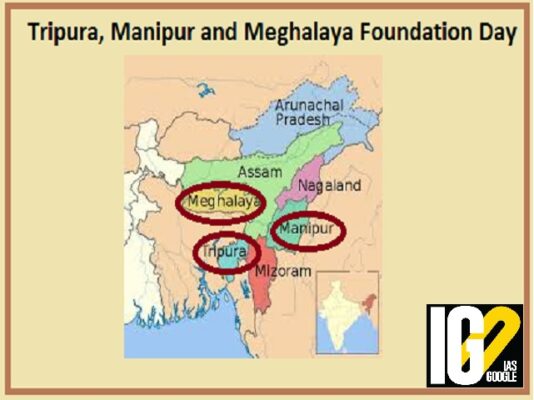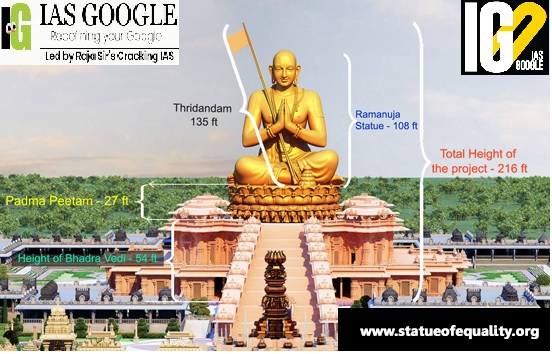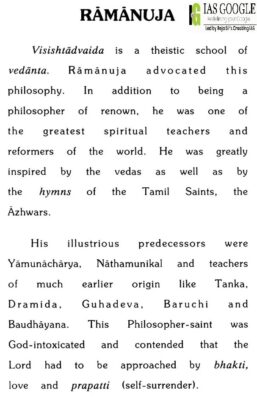- Home
- Prelims
- Mains
- Current Affairs
- Study Materials
- Test Series
 EDITORIALS & ARTICLES
EDITORIALS & ARTICLES
Jan 24, 2022
RESEARCHERS FIND A PRISTINE CORAL REEF OFF THE COAST OF TAHITI
Recently, scientists have discovered a pristine reef of giant rose-shaped corals off the coast of Tahiti.
 Tahiti Island:
Tahiti Island:
 Merger of Manipur with India
Merger of Manipur with India
 Olteniensis:
Olteniensis:

 Highlights about the new rule:
Highlights about the new rule:
 Genesis:
Genesis:
 About Tiger:
About Tiger:
 Facts about the statue:
Facts about the statue:
 Life:
Life:
 Tahiti Island:
Tahiti Island:
- Tahiti is the largest island of the Society Islands in French Polynesia, in the central South Pacific Ocean.
- The island consists of two ancient eroded volcanic cones, Tahiti Nui and Tahiti Iti.
- It accounts for one-third of the total land area of French Polynesia.
- Papeete is the capital and administrative centre of French Polynesia.
 Merger of Manipur with India
Merger of Manipur with India
- With demand of Manipur’s internal autonomy, Maharaja of Manipur, Bodh Chandra Singh, signed the Instrument of Accession with the Indian government.
- Under the pressure of public opinion, the Maharaja held elections in Manipur in June 1948and the state became a constitutional monarchy.
- Thus, Manipur was the first part of India to hold an election based on universal adult franchise.
- The Government of India succeeded in pressuring the Maharaja into signing a Merger Agreement in September 1949, without consulting the popularly elected Legislative Assembly of Manipur.
- Tripura was a princely state before its merger with Indian union.
- The widow queen of the last king Bir Bikram, Kanchan Prabha, who took over Tripura and its administration was instrumental for Merger of Tripura kingdom in Indian Union.
- In 1947, the rulers of the Garo and Khasi region acceded to the newly independent country of India.
- Meghalaya is a small hilly state located in the North Eastern Region of India.
- It came into existence as an autonomous state within the state of Assam on 2 April 1970.
- It comprised of the United Khasi and Jaintia Hills and the Garo Hills districts.
 Olteniensis:
Olteniensis:
- Smutsia has previously been thought to be an African genus, with the oldest specimen from South Africa at 5 million years ago.
- It is the youngest pangolin ever discovered from Europe and the only pangolin fossil from Pleistocene Europe.
- It was named Smutsia olteniensis after the Oltet river valley in Romania, where the specimen was found.
- This specimen demonstrates that Smutsia previously had a far larger biogeographic range.
- The species lived during the Pleistocene epoch about 1.9 and 2.2 million years ago.
- It was inaugurated on Republic Day in 1972.
- It was to mark India’s victory over Pakistan in the 1971 War, which resulted in the creation of Bangladesh.
- It was made to commemorate the martyred and unknown soldiers of the Indian Armed Forces who died during the war.
- It included a black marble plinth, a cenotaph, which acted as a tomb of the unknown soldier.
- It had four urns on it, with four burners.
- On normal days one of the four burners were kept alive, but on important days like the Republic Day, all four burners were lit.
- These burners were what is called the eternal flame, and it was never allowed to be extinguished.
- The eternal flame paid homage to the soldiers killed in the 1971 War, but does not mention their name, and the India Gate isa “symbol of India’s colonial past”.
- Since the inauguration of National War Memorial, Indian political and military leaders and foreign dignitaries pay their tributes to the fallen soldiers at the National War Memorial.
- It can also be seen as part of the government’s redevelopment of the entire Central Vista, of which India Gate, the Amar Jawan Jyoti and the National War Memorial are parts of.
- Central Vista Redevelopment Project refers to the ongoing redevelopment to revamp the Central Vista, India's central administrative area located near Raisina Hill, New Delhi.
- It was inaugurated in 2019.
- It was built to commemorate all the soldiers who have laid down their lives in the various battles, wars, operations and conflicts of Independent India.
- The architecture of the memorial is based on four concentric circles namely Raksha Chakra, Tyag Chakra, Veerta Chakra, Amar Chakra.
- Raksha chakra: Known as the Circle of Protection which is marked by a row of trees, each of which represent soldiers, who protect the country.
- Tyag chakra:
- Known as the Circle of Sacrifice, has circular concentric walls of honour based on the
- The walls have independent granite tablets for each of the soldiers who have died for the country since Independence.
- Veerta Chakra: Known as the Circle of Bravery, has a covered gallery with six bronze crafted murals depicting the battles and actions of Armed Forces.
- Amar Chakra: Known as the Circle of Immortality, which has an obelisk, and the Eternal Flame.
- It was inaugurated in 1931.
- India gate, formerly known as the All-India War Memorial, is a war memorial located astride the Rajpath, New Delhi.
- It stands as a memorial to 90,000 soldiers of the British Indian Army who died in between 1914 and 1921 in the First World War.
- It was designed by Sir Edwin Lutyens, the gate evokes the architectural style of the triumphal arch such as the Arch of Constantine, in Rome.

- Pristimantis gretathunbergae is a species of rain frog.
- It is popularly known as the Greta Thunberg Rain frog.
- It is named after the Swedish environmentalist activist Greta Thunberg.
- Reason: to curtail the menace of counterfeit and substandard drugs in the country.
- Every Active Pharmaceutical Ingredient (API) manufactured or imported in India shall have QR code on its label at each level packaging.
- Active Pharmaceutical Ingredients or APIs are the main raw materials for making intermediates, tablets, capsules, and syrups.
- Facilitates tracking and tracing, during the entire supply chain.
- Ensures authenticity by distinguishing between genuine and counterfeit drugs.
- Help in ensuring fair pricing and curtailing counterfeit and smuggled drug items that may endanger people’s health.
- Give details about medicines, shipping details, batch, license number & import license.
- Keep the customer updated about any price change in drugs.
- QR stands for "Quick Response", which refers to instant access to the information hidden in the Code.
- QR Code is a two-dimensional version of the barcode, typically made up of black and white pixel patterns.
- QR code has large storage capacity and ability to translate information to consumers.
- It gathers feedback to improve products or services.
- It helps in commercial tracking of the products.
- It helps in product marketing by increasing customer engagement with images or videos.
- It promotes business via events and coupons.
- It delivers information stored in tickets, payments, business cards.
 Genesis:
Genesis:
- State authorities usually cleared the Environmental Impact Assessments (EIA)for proposed projects.
- While major ‘Category A’ projects like highways are cleared by the Union government, rest projects including mining, thermal plants, river valley, and infra projects, fall under the purview of state bodies.
- The State Environment Impact Assessment Authority (SEIAA)will implement star-rating system.
- It would be a 5-star rating system, with 5 stars showing the highest ranking.
- In this, a high rate of clearance and those which seeks fewer “essential details”, will be ranked the highest.
- Stars will be determined by the marks allotted by the union MoEFCC, after performance evaluation. Performance evaluation includes evaluation of :
- Time and document for granting clearance
- Amount of EDS (essential details sought)
- Disposal time of fresh Terms of Reference (TOR) or TOR amendment proposals.
- After screening, the SEIAA provides the client a Terms of Reference (TOR) document which defines the purpose and structures of the project, committee, meeting, negotiation, etc.
- SEIAA which gets a total of fewer than 3 marks will get no star.
- SEIAA has more than 7marks, it will be ranked as 5-star (the highest ranking).
- Compromising environmental health in name of Ease of doing business.
- Surpassing the EDS (essential details sought) and EIA process in the name of a speedy process.
- Weakening the SEIAAs and making them rubber stamps authority
- Triggering the issue of co-operative federalism.
- EIA is a regulatory evaluation to estimate the relevance and impact of infrastructural projects.
- In India, the EIA process is regulated by EIA rules 2020, released under the Environment (Protection) Act, 1986.
- Government of Malaysia and Global Tiger Forum (GTF) organized the 4th Asia Ministerial Conference on tiger conservation.
 About Tiger:
About Tiger:
- The Tiger (Panthera tigris) is the largest living cat species and a member of the genus Panthera.
- The species is found from the Russian far east till the parts of North Korea, China, India and Southeast Asia.
- Types of Tigers: 9 Subspecies (3 Extinct)
- Types of Tigers still alive: 6 subspecies - Siberian Tiger, South China Tiger, Sumatran Tiger, Indochinese Tiger, Malayan Tiger and Bengal Tiger
- Also known as: Royal Bengal tiger, Indian tiger
- Range: Indian subcontinent (India, Nepal, Bhutan, Bangladesh)
- IUCN Status: Endangered
- Features: Large bodies, white mutation.
- It is a tiger conservation programme launched in April 1973 by the Government of India.
- Aim: Ensuring a viable population of the Bengal tiger in its natural habitats, protecting it from extinction, and preserving areas of biological importance across the tiger's range in the country.
- The State Government shall prepare a tiger conservation plan for management of each area referred to in sub-section (1), so as to ensure:
- Protection of tiger reserve and providing tiger reserve specific habitat inputs for maintaining a viable population of tigers.
- Ecologically compatible land uses in tiger reserves and areas linking one Protected Area (PA) with another PA or tiger reserve for providing dispersal habitat and corridors.
- Forestry operations of regular forest divisions.
- NTCA is a statutory body under the Ministry of Environment, Forests and Climate Change.
- It was constituted under the Wildlife (Protection) Act, 1972, amended in 2006 for strengthening tiger conservation.
- Providing statutory authority to Project Tiger so that compliance of its directives become legal.
- Fostering accountability of Centre-State in management of Tiger Reserves.
- Providing for an oversight by Parliament.
- Addressing livelihood interests of local people in areas surrounding Tiger Reserves.
- To approve the tiger conservation plan prepared by the State Government under section 380 (1) (a) of the Wildlife (Protection) Act, 1972.
- Disallow unsustainable land use such as, mining, industry within the tiger reserves.
- Lay down guidelines for project tiger in the buffer and core area of tiger reserves.
- Provide information on protection measures including future conservation plan, estimation of population of tiger, status of habitats, disease surveillance etc.
- GTF is the inter- governmental international body established to embark on a global campaign to protect the Tiger.
- Formed in: 1993 at New Delhi, India.
- It focuses on saving the remaining 5 sub-species of Tigers distributed over 13 Tiger range countries of the world.
- It has a General Assembly meeting every 3 years and Standing committee meetings at least once a year.
- Aim: To highlight the rationale for Tiger preservation throughout the world in order to safeguard the survival of the Tiger, its prey and its habitat.
 Facts about the statue:
Facts about the statue:
- The 216-foot outdoor statue will be the world's second-largest statue featuring a sitting posture.
- The statue is made of 'panchaloha,' a five-metal alloy consisting of gold, silver, copper, brass, and zinc.
- The inner sanctorum, deity of Ramanujacharya is made of 120 kilos of gold, to commemorate the 120 years the saint spent on earth.
 Life:
Life:
- Ramanuja or Ramanujacharya was an Indian philosopher, theologian, social reformer.
- He was born in 1017 in Tamil Nadu, and was named Lakshmana.
- He was also referred to as Ilaya Perumal which means the radiant one.
- He studied under Yadvaprakasha, a follower of the Advaita system of the Vedanta Shankara.
- He crafted his own doctrine called bhakti.
- It emphasized the unconditional love of a devotee to a personal god.
- He later became the priest of a temple and began teaching about moksha.
- He was one of the most important exponents of the Sri Vaishnavism tradition within Hinduism.
- He disappeared at the age of 120 in Srirangam, Tamil Nadu in 1137 CE.
- He brought about a socio-cultural revolution by preaching that every human being is equal, irrespective of religion, gender, race, caste, or creed.
- He strongly opposed caste discrimination and allowed entry of all into temples.
- He named subjugated classes Thirukkulathar-Born Divine.
- He made 'bhakti' the major force within different traditions of Hinduism.
- He propagated theories that assert that there exists a plurality and distinction between 'Atman' (soul) and 'Brahman'.
- There is a unity of all souls and that the individual soul has the potential to realise identity with the Brahman.
- Major Works:
- Vedārthasangraha (Summary of Vedas meaning)
- Sri Bhāshya (a review and commentary on the Brahma Sutras)
- Bhagavad Gita Bhāshya (a review and commentary on the Bhagavad Gita)
- His philosophical foundation is called Vishishtadvaita in the Hindu tradition.
- His ideas constitute one of three sub-schools in Vedānta.
- Tyagaraja Aradhann is the commemorative music festival that is held every year in Thiruvaiyaru in Thanjavur district of Tamilnadu, during the months of January to February in Tyagaraja's honor.
- He was a composer and vocalist of Carnatic music, a form of Indian classical music.
- He was prolific and highly influential in the development of India's classical music tradition.
- Tyagaraja and his contemporaries, Shyama Shastri and Muthuswami Dikshitar, are regarded as the Trinity of Carnatic music.
- Tyagaraja composed thousands of devotional compositions, most in Telugu and in praise of Lord Rama, many of which remain popular today.
- Of special mention are five of his compositions called the Pancharatna Kritis, which are often sung in programs in his honour.
- Tyagaraja saw the reigns of four kings the Maratha dynasty:
- Tulaja II (1763–1787)
- Amarasimha (1787–1798)
- Serfoji II (1798–1832)
- Sivaji II (1832–1855).









 Latest News
Latest News General Studies
General Studies